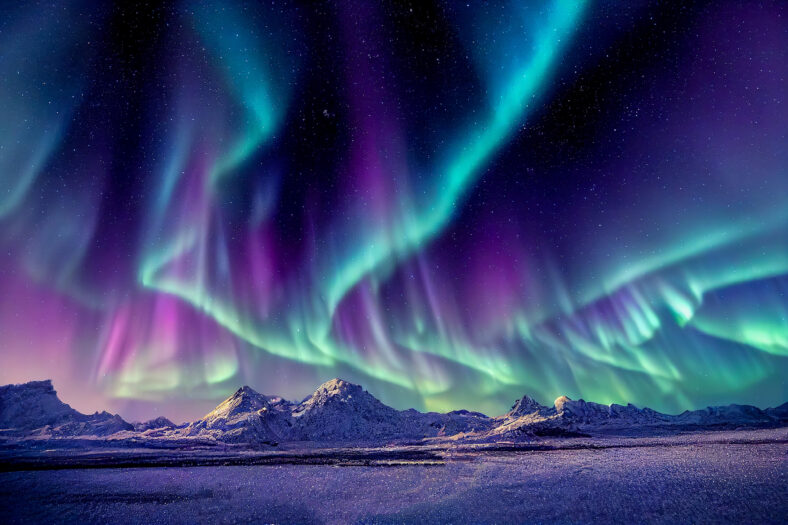There’s Finally An Explanation Behind The Ghostly Gray Glow Sometimes Seen Next To The Northern Lights

Sometimes, a glowing, whitish-gray patch appears in the sky next to the northern lights. Researchers at the University of Calgary have finally explained the phenomenon for the first time.
It may be a “structured continuum emission” that is associated with aurora borealis and is most likely a source of heat, suggesting that the aurora borealis is more complex than previously thought.
The mysterious patch has been referenced in scientific papers before, but it has never been explained—until now.
“You’d see this dynamic green aurora, you’d see some of the red aurora in the background and, all of a sudden, you’d see this structure—almost like a patch—gray-toned or white-toned-emission connected to the aurora,” said Dr. Emma Spanswick, the lead author of the study. “So, the first response of any scientist is, ‘Well, what is that?'”
The research team documented and analyzed the whitish-gray-toned structures that materialized alongside active auroras.
The discovery was made possible by an advancement in camera technology that allows both scientific and amateur photographers to capture the true colors of auroras in the sky.
“Everyone has noticed the advancement in digital photography. Your cellphone can now take pictures of the aurora,” Spanswick said.
“That has flowed to the commercial sensor market now. Those types of sensors can now be found in more commercial, more robust sensors that we would use in science.”
The team used cameras called the Transition Region Explorer to identify 30 different events where the structures showed up in the night sky.

Sign up for Chip Chick’s newsletter and get stories like this delivered to your inbox.
The structures varied in size from about 10 to several hundred miles across. They were always within or adjacent to auroras.
Then, they looked at how the light from the white/gray patches is produced in order to better understand what sets them apart from regular auroras.
Traditional auroral lights occur when energetic particles from the sun collide with gases in the Earth’s upper atmosphere.
As a result, they glow in different colors, such as green from oxygen atoms and red from nitrogen molecules. However, the white/gray structures seem to be produced through chemiluminescence, the process that makes fireflies light up and causes the blue glow in ocean waves.
The research into the structures came after fresh interest in continuum emission sparked by observations of STEVE (Strong Thermal Emission Velocity Enhancement), a long, glowing purple ribbon of light.
“There are similarities between what we’re seeing now and STEVE,” said Spanswick. “STEVE manifests itself as this mauve or gray-toned structure.”
“To be honest, the elevation of the spectrum between the two is very similar, but this, because of its association with dynamic aurora, it’s almost embedded in the aurora. It’s harder to pick out if you were to look at it, whereas STEVE is separate from the aurora—a big band crossing the sky.”
The gray patches glow with a consistent brightness across all colors of light, whereas regular auroras shine brighter in certain colors.
Overall, this research shows how much more there is to learn about our night sky. As camera technology improves, we can reveal more clues about atmospheric activity.
The study was published in Nature Communications.
More About:News